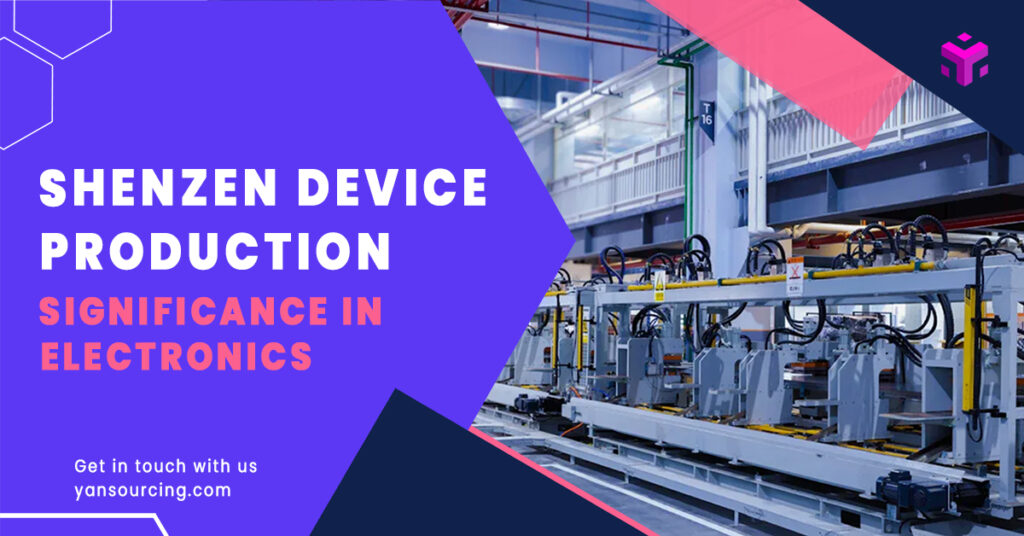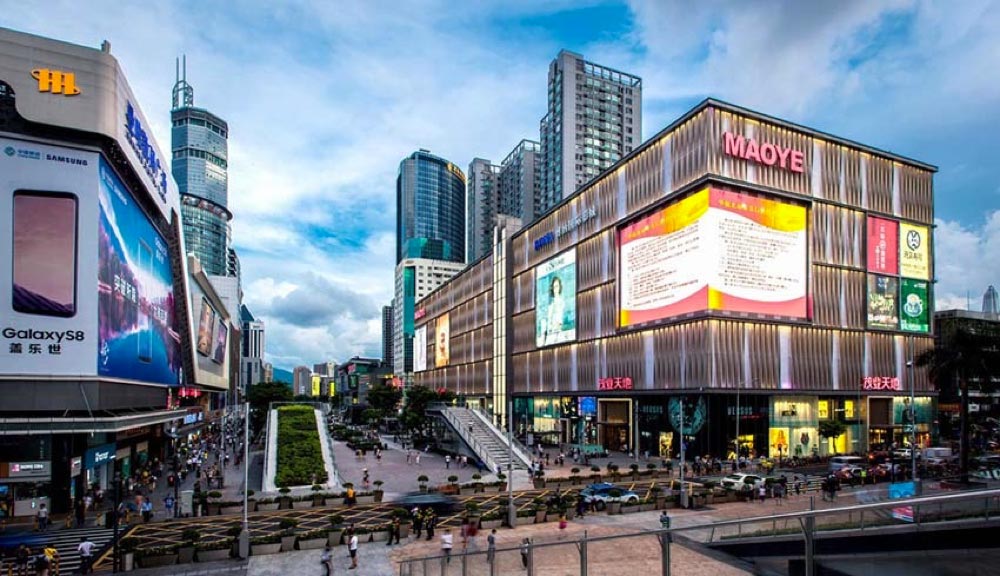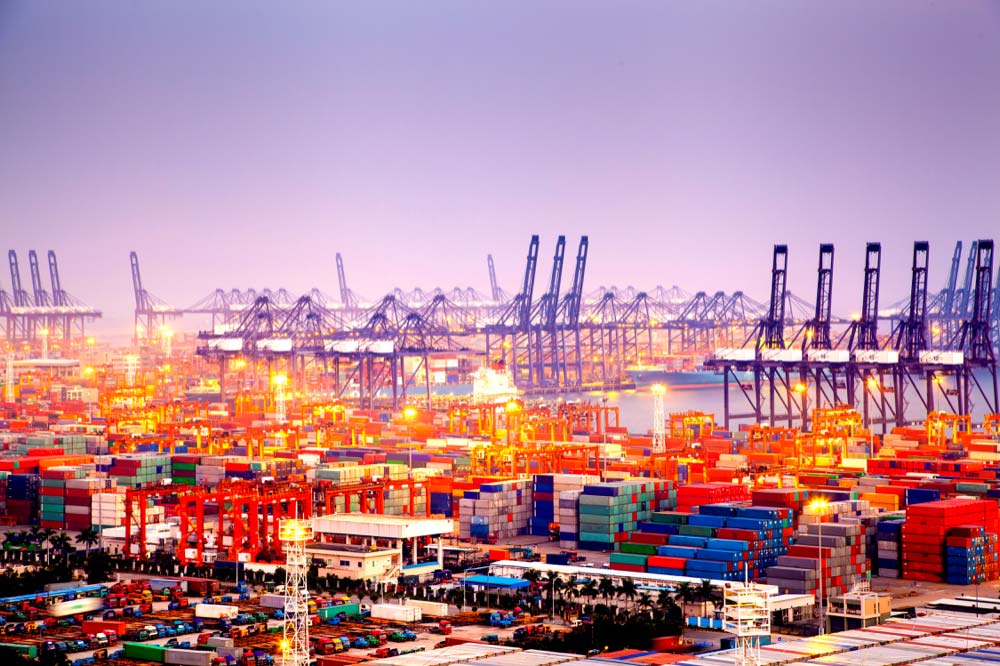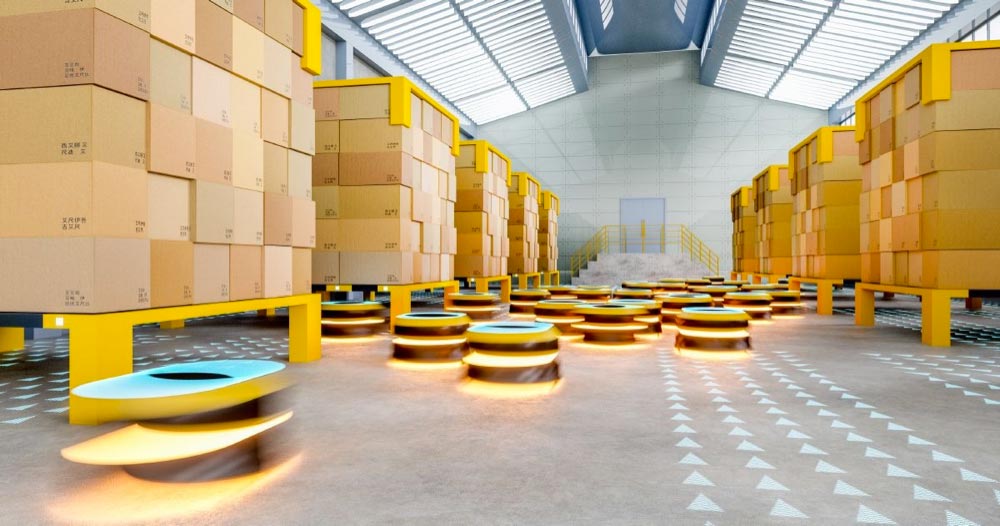
Shenzhen is a world leader in making electronics, often referred to as the “electronics capital of the world” and the “Silicon Valley of hardware.” The city produces many devices, including smartphones and computers. In 2020, China, led by Shenzhen, accounted for 35% of the world’s electronics. Shenzhen is home to over 4,700 high-tech companies and 30,000 tech businesses, making it a hub for innovation and rapid development. Its robust supply chains and advanced factories ensure that Shenzhen remains a vital player in technology, particularly in the production of cutting-edge Shenzhen devices.
Key Takeaways
Shenzhen is called the ‘electronics capital of the world.’ It makes 35% of all electronics globally.
The city changed from a fishing village to a tech leader after the Special Economic Zone started in 1980.
Government plans, like ‘Made in China 2025,’ helped Shenzhen grow and create new ideas.
Huaqiangbei is a huge electronics market in Shenzhen. It is a place for inventors and fast product creation.
Shenzhen’s connected factories make products quickly. This helps businesses turn ideas into real items fast.
Helpers like Yansourcing guide startups in Shenzhen’s market. They ensure good quality and strong supplier connections.
Visiting Shenzhen’s factories shows how advanced manufacturing and quality checks work.
Shenzhen cares about the environment. It uses green ideas like electric cars and projects to cut pollution.
The rise of Shenzhen as a global manufacturing hub
From fishing village to Shenzhen manufacturing powerhouse
Picture a small fishing village turning into the electronics capital of the world. That’s the story of Shenzhen. In the late 1970s, it was a quiet town with few people. Everything changed in 1980 when the Special Economic Zone (SEZ) was created. This decision brought in foreign money and sped up city growth. Farmland turned into skyscrapers, and factories started making both simple and advanced electronics.
Now, Shenzhen is known for both innovation and production. It doesn’t just make a lot of products; it makes smart ones that combine hardware and software. From smartphones to AI gadgets, you can find it all here. This change didn’t happen instantly, but Shenzhen’s success shows what hard work and planning can do.
Government policies that shaped Shenzhen’s industrial growth
How did Shenzhen grow so fast? The answer is smart government decisions. The SEZ was just the start. Later, programs like “Made in China 2025” helped improve research and development. Some plans had problems, like subsidies not always working well, but they built the base for Shenzhen’s industries.
Look at electric vehicles (EVs) as an example. Early rules didn’t work well because of low sales and poor quality. But changes made things better, and now Shenzhen leads in EV innovation. The semiconductor industry also grew with government help, making China stronger in this important field. These examples show how smart policies can grow industries and create success.
Key milestones in Shenzhen’s journey to becoming a global leader
Shenzhen’s growth is marked by big moments that tell its story:
1979: Named a Special Economic Zone, bringing in foreign money.
1980: Fast growth started, called “Shenzhen speed.”
1980s: Became a testing ground for new economic ideas, like stock markets.
These moments weren’t just dates; they were big changes that pushed Shenzhen forward. Today, the city is a global leader in manufacturing, innovation, and determination.
The unique ecosystem of Shenzhen manufacturing
Huaqiangbei: The center of Shenzhen’s electronics market
Picture a huge electronics market full of exciting tech items. That’s Huaqiangbei, the main hub of Shenzhen’s electronics world. This market is massive, covering many floors and a huge area. You can find everything here, from tiny parts to ready-to-use gadgets.
Huaqiangbei is more than just a shopping spot; it’s where ideas grow. Inventors come here to get parts and test their creations. Need a special chip or sensor? You’ll probably find it in no time. Steven Tang, CEO of Anker Innovations, said it best:
If you want to make products quickly, you need to be in China—especially in Shenzhen. What takes weeks elsewhere can be done in hours here.
This market thrives because Shenzhen supports quick testing and building. Whether you’re a new company or a big one, Huaqiangbei gives you tools to create and produce fast.
Connected supply chains for fast Shenzhen device production
Shenzhen’s manufacturing system works like a perfect machine. It connects design, supply, and production all in one place. This makes Shenzhen the top electronics maker in the world.
Here’s why it’s so effective:
The city has both big factories and small workshops for making products.
Small businesses can test ideas with small production runs before going big.
Everything you need—materials, workers, and tools—is easy to find, saving time and money.
This setup lets companies turn ideas into products faster than anywhere else. From everyday gadgets to smart AI devices, Shenzhen’s supply chain is the best for quick production.
Shenzhen’s factories: Key to large-scale production
Shenzhen’s factories are the heart of its success. They use advanced tools and large systems to meet global needs. Here’s what makes them special:
Feature | Details |
|---|---|
Production Power | Smart and flexible systems, like MES management. |
Yearly Output | |
Production Lines | 35 SMT and 25 DIP lines with top equipment. |
Quality Checks | Real-time checks to reduce mistakes. |
Certifications | International standards like ISO 9001 and IATF 16949. |
These factories don’t just make electronics; they do it fast and with great quality. Shenzhen’s economy shows this strength, growing 5.4% yearly. Industries like computer and electronics grew by 13.7%, proving the city’s ability to succeed.
From 3D printers to robots, Shenzhen’s factories are leading the way. Their speed and quality make them essential for businesses everywhere.
Collaboration opportunities for startups and sourcing agents like Yansourcing
Shenzhen is a great place for startups and sourcing agents to work together. If you’re a startup with product ideas, Shenzhen’s factories can help you make them real. The city’s fast pace and many resources make it easy to turn ideas into products.
Startups often struggle with finding good suppliers, keeping costs low, and ensuring quality. This is where sourcing agents like Yansourcing can help. They guide you through Shenzhen’s busy market and handle tricky tasks like supplier talks, shipping, and quality checks. This lets you focus on creating new ideas.
Working together isn’t just helpful—it helps you grow. When startups team up with sourcing agents, they get access to useful tools and knowledge. For example:
Startups learn to work faster and smarter with sourcing agents.
These partnerships improve how you make products and stay ahead.
You can test and change ideas quickly to meet market needs.

Yansourcing has over 10 years of experience helping startups in Shenzhen. They are experts in finding factories for electronics, toys, and office items. Whether you need a sample or full production, Yansourcing makes sure everything fits your plan. They find the right factories and check quality, so you have fewer worries.
There’s more. Sourcing agents also help solve problems like cultural differences or company rules. Yansourcing’s friendly approach makes communication easy and fixes issues fast. This support is key when growing your business in a tough market.
In Shenzhen, there are endless chances to work together. By teaming up with sourcing agents like Yansourcing, you can use Shenzhen’s amazing factories to bring your ideas to life quickly. It’s not just about making things—it’s about building success for the future.
Practical aspects of working in Shenzhen
Visiting Shenzhen manufacturing facilities and understanding production processes
When you visit factories in Shenzhen, you’ll see amazing technology. These factories are not just for making things; they are high-tech hubs. Everything runs smoothly, from making products to checking quality. Shenzhen focuses on working fast and using advanced tools. The city has grown quickly while keeping pollution low. This shows how Shenzhen balances industry and the environment.
If you want to know how products are made, visit a factory. You’ll watch modern machines build and test devices. Many factories use smart systems to check quality instantly. Seeing this process helps you trust how products are made. It also teaches you more about how supply chains work.
Building supplier relationships with the help of sourcing agents like Yansourcing
Finding good suppliers in Shenzhen can be hard if you’re new. Sourcing agents like Yansourcing make it easier. They help you find trusted suppliers who match your needs.
Yansourcing does more than connect you with suppliers. They handle talks, check quality, and manage shipping. This lets you focus on your business while they handle the details. For example, if you need electronics, Yansourcing ensures they meet your standards. Their knowledge of Shenzhen’s market makes them a great partner for any business.
Working with a sourcing agent also avoids common problems. They know the local market and help with cultural differences. This saves time and builds trust with suppliers. Strong supplier relationships lead to long-term success.
Navigating cultural and language differences in Shenzhen
Shenzhen has many cultures, but working there can be tricky. Mandarin is the main language, but some people speak Cantonese too. These language differences can cause confusion. With some preparation, you can handle these challenges.
One way is to work with sourcing agents like Yansourcing. They can translate and help you understand local customs. Learning a few Mandarin phrases also helps build good relationships.
Cultural differences matter too. Shenzhen’s fast business style may feel new to you. Learning about local manners and showing respect during talks can help. Patience and understanding go a long way in building trust.
Even with challenges, Shenzhen offers great chances to work together. Its resources and friendly policies help businesses grow. By understanding culture and communicating well, you can succeed in Shenzhen.
Tips for sourcing consumer products and managing logistics in Shenzhen

Finding products and handling shipping in Shenzhen can seem hard. But with the right steps, it can be simple and smooth. Here are some easy tips to help you work in this busy city.
Know what you need: Before starting, decide on your product details. Be clear about materials, design, and quality. This helps you explain your needs to suppliers and avoid problems.
Ask for samples and test them: Always get product samples before ordering a lot. Check these samples carefully to make sure they are good. This step saves money and avoids mistakes later.
Check quality often: Quality checks are important in Shenzhen’s fast factories. Plan inspections during production and before shipping. This ensures your products meet the agreed standards.
Work well with suppliers: Good supplier relationships make things easier. Talk openly and agree on fair terms. Sourcing agents like Yansourcing can help you find trusted suppliers and handle talks.
Plan shipping early: Choose your shipping method before production starts. Air freight is fast, while sea freight costs less. Book containers early to avoid delays.
Use helpful technology: Shenzhen is full of innovation, and you can use it too. Track shipments in real-time and use tools to predict demand. These help you stay ahead in the market.
Follow the rules: Shenzhen has strict customs rules. Make sure your shipments follow these rules to avoid delays. Sourcing agents can help with this process.
Improve storage and delivery: Better storage saves money and speeds up delivery. Use smart systems and plan space well. For deliveries, check traffic updates to find quick routes.
By using these tips, you can succeed in Shenzhen’s busy manufacturing world. Whether you’re buying electronics or other items, a good plan leads to success. Shenzhen’s resources and skills offer great chances for your business.
Labor practices and comparisons with other regions
Workforce dynamics in Shenzhen’s manufacturing sector
Shenzhen’s workers are a mix of old and new ways. There’s a balance between full-time staff and temporary workers. By 2022, one-third of the workers were on-demand. During busy times, this number can rise to two-thirds.
Big factories, with over 10,000 workers, depend on flexible staff. Sometimes, 80% of their workers are temporary. This helps Shenzhen keep up with fast global demands. About 89% of these workers are in electronics production.
This flexible system keeps Shenzhen quick and adaptable. It also shows how the city handles big projects while keeping quality high.
Labor costs and productivity in Shenzhen compared to other regions
Shenzhen’s wages are higher than many parts of China. But they’re still affordable compared to other countries. This makes Shenzhen a good choice for businesses wanting quality and fair costs.
Workers in Shenzhen are skilled and work quickly. They are used to high-tech jobs, which makes them very productive. This high skill level balances out the slightly higher wages.
In places like Southeast Asia, labor is cheaper. But Shenzhen has better tools and trained workers. While Vietnam or Indonesia may cost less, Shenzhen’s speed and quality often make it worth the price.
Ethical considerations and improving labor standards in Shenzhen manufacturing
Fair treatment of workers is becoming more important in Shenzhen. The city has improved, but some factories still face issues. Some don’t fully follow labor rights, raising concerns about worker treatment.
Groups and governments are asking for better rules and checks. They want safer workplaces and fair pay for workers. The Universal Declaration of Human Rights guides these efforts.
Shenzhen is working to fix these problems. Many factories now have stricter rules and better conditions. Some offer higher pay, safer spaces, and clearer policies.
Businesses can help too. Working with sourcing agents like Yansourcing ensures you choose factories with fair practices. This helps workers and improves your brand’s image.
The future of Shenzhen in electronics manufacturing

Innovations driving the next phase of Shenzhen device production
Shenzhen is leading the way in new technology. It keeps improving how electronics are made. New ideas in semiconductors and smart devices are changing the industry. In 2023, Shenzhen spent 223.66 billion yuan on research. This money helps create amazing projects. For example, Huawei made HarmonyOS Next, which works better than Android.
The city is also working on advanced semiconductors and communication tools. Big science centers like the Guangdong-Hong Kong-Macao Greater Bay Area help with these projects. Partnerships with groups like ASTRI make factories work faster and smarter. These efforts keep Shenzhen as a top tech city.
Custom-made electronics and smart gadgets are becoming more popular. People want more IoT and 5G devices. Shenzhen is ready to meet these needs. It uses fast prototyping and cloud-based tools to stay ahead. Shenzhen leads the global market with its speed and creativity.
Sustainability initiatives in Shenzhen’s manufacturing industry
Shenzhen cares about the environment while staying a tech leader. The city has many green projects to lower pollution. Here are some examples:
Initiative | Description |
|---|---|
Electric Vehicles | 25% of cars and all buses are electric, reducing pollution. |
Charging Stations | More EV chargers than gas stations, promoting clean energy. |
Carbon Footprint Labeling | First in China to label products for eco-friendly choices. |
Sponge City Concept | Uses natural water systems to stop floods and save water. |
Mangrove Preservation | Protects mangroves to save wildlife and the environment. |
These actions show how Shenzhen grows responsibly. By going green, it ensures its factories stay eco-friendly for the future.
Challenges and opportunities in a changing global landscape
Shenzhen’s rise from a small village to a tech hub is amazing. But it faces problems like higher wages and pollution. These issues also bring chances to improve and grow.
Huaqiangbei, Shenzhen’s electronics market, is still very important. It helps startups find parts and tools easily. Better pay and working conditions attract skilled workers. This makes Shenzhen a great place to work and keeps it competitive.
Shenzhen is also fixing environmental problems. Factories are using greener methods, and the government is solving pollution issues. These changes make life better and build Shenzhen’s image as a responsible city.
As the world needs more electronics, Shenzhen is ready to lead. Its focus on new ideas, green practices, and teamwork will shape the future of electronics manufacturing.
Shenzhen’s role in shaping the future of global electronics manufacturing
Shenzhen is more than just a city; it’s a leader in how electronics are made. Many of your favorite gadgets likely started in Shenzhen. The city’s mix of new ideas, fast work, and flexibility makes it a top place for manufacturing.
A hub for innovation
Shenzhen is full of fresh ideas. Startups and big tech companies work together here to create amazing products. The city focuses on advanced areas like artificial intelligence, 5G, and smart devices. This means better and faster products for everyone.
For example, Huawei has made advanced systems and tools in Shenzhen. These inventions don’t just help one company—they push global technology forward.
Speed and adaptability
Shenzhen is known for working fast. Imagine thinking of a product and seeing it made in weeks. That’s how Shenzhen’s factories work. They can quickly adjust to make small or large amounts of products.
This speed helps businesses stay ahead. You can test, change, and sell products faster. That’s why companies from all over the world come to Shenzhen to make their ideas real.
A global impact
Shenzhen’s influence reaches far beyond its borders. The city leads trends in the electronics world. Its focus on being eco-friendly is a great example. Shenzhen shows that industries can grow while protecting the planet.
For businesses, this means you can make products that are good for both customers and the environment. Shenzhen offers green manufacturing options that meet global goals.
Tip: Want to turn your ideas into products? Shenzhen is the best place. With its resources and skills, the city gives you endless chances to grow.
Shenzhen isn’t just leading electronics manufacturing—it’s setting the standard. By mixing new ideas, speed, and care for the planet, Shenzhen stays ahead. For you, this means endless ways to create, improve, and succeed.
Conclusion
Shenzhen’s manufacturing system is one of a kind. Its strong supply chains and creative centers help advance global technology. In 2023, Shenzhen’s economy grew faster than Beijing and Shanghai. Exports rose by 12.5%, and $2.4 billion in foreign funds came in.
Key Fact | Data |
|---|---|
Growth in high-tech industries | 16% |
Rise in high-tech manufacturing funds | 64% increase |
New national labs added | 3 |
Amazon’s new innovation hub announced | December 2023 |
Shenzhen’s culture is also exciting:
It grew from a small village into a tech leader.
People from many places add to its rich culture.
Innovation parks support new business ideas globally.
With help from partners like Yansourcing, Shenzhen turns ideas into products. This makes it a key place for businesses around the world.
FAQ
1. Why is Shenzhen special for making electronics?
Shenzhen is great for fast production and advanced factories. Its strong supply chains help turn ideas into products quickly. The city also supports startups and businesses to grow and create new things.
2. How do sourcing agents like Yansourcing help businesses?
Sourcing agents make finding suppliers and managing logistics easier. They handle price talks, check quality, and solve cultural issues. Yansourcing helps businesses succeed in Shenzhen’s busy market.
3. Is making products in Shenzhen costly?
Making products in Shenzhen costs less than in many countries. Wages are higher than some places, but skilled workers and smart tools make it worth the cost.
4. Can I visit Shenzhen factories?
Yes, you can visit factories to see how things are made. Many factories allow tours, helping you check quality and build trust with suppliers.
5. What products can I get from Shenzhen?
Shenzhen is famous for electronics but also makes toys, office items, and more. Its factories can produce many types of products.
6. How do I deal with language problems in Shenzhen?
Language can be tricky, but sourcing agents like Yansourcing can help translate. Learning simple Mandarin phrases also improves communication with suppliers.
7. Are Shenzhen factories good for the environment?
Many Shenzhen factories use green methods like clean energy and less waste. The city also supports eco-friendly projects like electric cars and carbon labeling.
8. How fast can products be made in Shenzhen?
Shenzhen’s system is very quick. Depending on your product, you can go from idea to production in just weeks.

